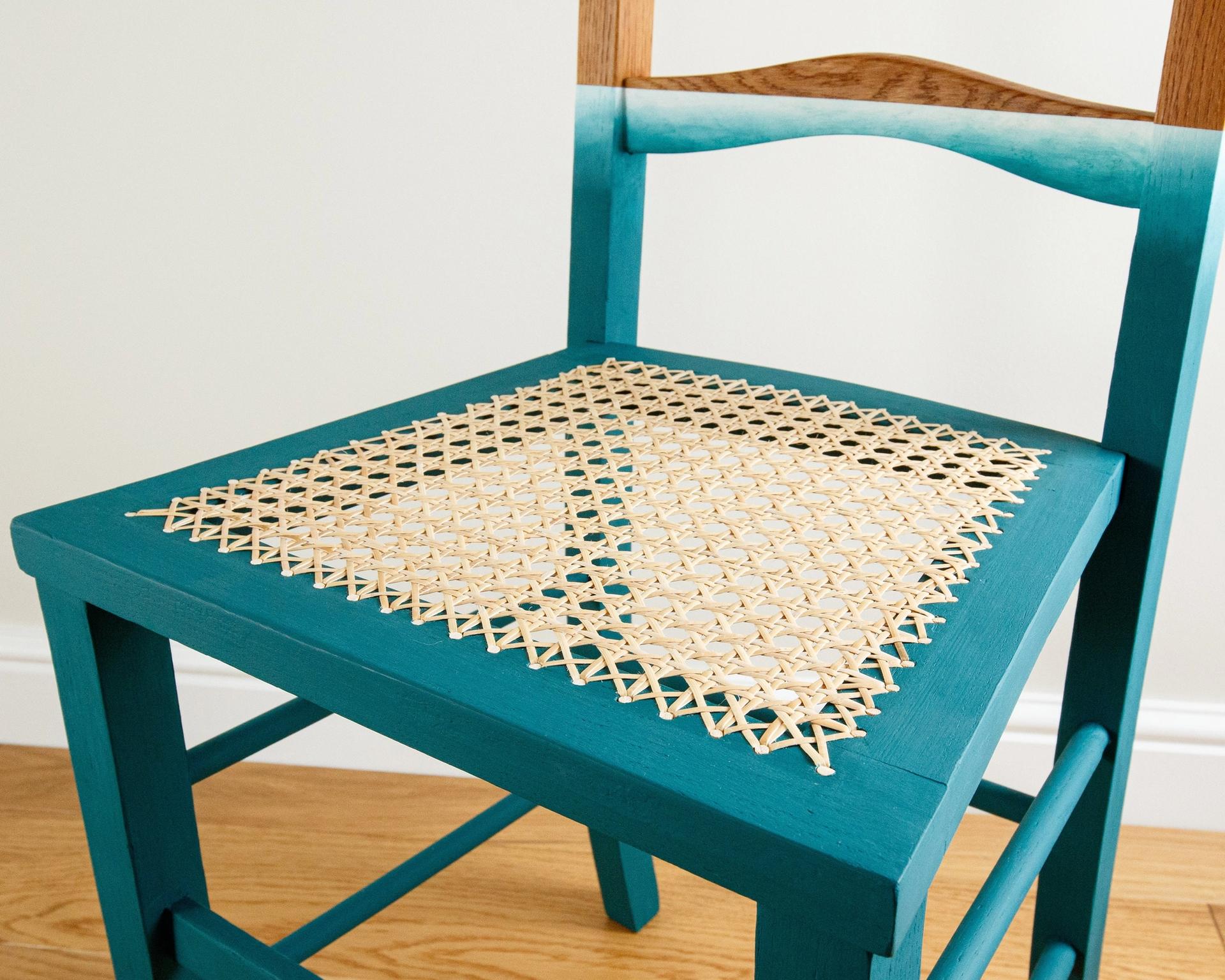Chair Caning
We take great pride in our chair caning service. All woven by hand in high quality rattan cane in a standard six-way weave.
Most cane woven patterns are based around the traditional six way weave, so called because there are six separate stages to the process. In furniture that requires this type of weaving, there will be a series of holes drilled through the perimeter of the frame.


Pricing
Chairs with up to 100 holes are charged at £1.20 per hole.
Chairs with over 100 holes are charged at £1.40 per hole.
Chairs with curved frames, blind holes or circular seats are priced individually.
All chairs are finished with cane pegs, charged at £20 per chair.
Any repairs required to the seat rails and chair itself can also be carried out. A full chair makeover is also available.



I prefer to see the existing chair weaving in place if possible, enabling me to assess the original weave patterns and materials. Please contact to discuss any requirements and pricing and include photographs of the chair, showing the front and back of the woven area.
There is no need to apply a final finish to your newly caned seat because chair cane has a naturally protective glossy finish. Traditionally, cane seats are left unfinished to allow the cane to absorb moisture in the air and remain flexible, expanding and contracting with the temperature in the room.
Although cane will darken with age on its own, to a nice honey-brown golden colour, it will take several years to achieve this. If you feel you must apply some sort of finish, high oil content furniture polish products can be used successfully; lemon oil, orange oil and mineral oil. Occasionally, Tung oil, varnish or even wax furniture polish are used as a finish on the cane without harmful effects.
With reasonable care, attention, and use, your cane-seated chair should last from 5-25 years. But if you notice a few broken strands or a hole becoming bigger, place a padded cushion over the seat to gain many more months or even years of use.
I recommend to all my customers that they keep using the chair until the entire seat (or a large portion of it) fails before they have it rewoven. A couple of broken strands in the backs or under the arms can be replaced fairly easily. But due to the pressure they withstand, patching the cane on the seats tends not to hold up for long.



Looking after your cane furniture
Here are some helpful tips to keep your cane furniture looking good for longer:
1. Clean your cane furniture
Clean grimy or dirty cane seats with a wood soap or mild detergent in warm water, using a soft cloth or perhaps a soft bristle brush. Take care not to damage the wood surface with the water. Rinse well and then let the seat dry naturally on a warm, windy day to eliminate the possibility of mould and mildew setting in, which will damage and stain the cane.
Do not sit on the seat for at least 48 hours otherwise, the cane will stretch out of shape. Using a high-oil content furniture polish product when you dust helps to keep the cane supple, too. Lemon oil, orange oil, or mineral oil (use sparingly) applied to both the top and bottom of the cane seat a few times a year is usually sufficient.
2. Keep cane furniture away from extreme heat and low humidity
These conditions could cause the cane to dry out and become brittle and break. Also direct sunlight is to be avoided.
3. Distribute your body-weight evenly on the cane seat
A cane seat is intended to take the evenly distributed weight of the person sitting on it, not concentrated weight, like a knee or foot. So NEVER stand or kneel on a cane seat or use it as a ladder or step stool. Doing so will cause the cane strands to break and the seat will need to be rewoven prematurely.
4. Is your cane seat sagging?
Cane has natural elastic properties but eventually, the caned seat will begin to sag with heavy or prolonged use. It is important to tighten the cane or it will begin to wear and break along the inside edge of the seat frame, on both of the side rails, and front and back edges. Cane seats that are not too badly stretched or that are free of broken strands, can be revived by turning the chair upside-down and applying a warm, wet cloth to the underside of the cane seat. Let the cloth and cane dry naturally overnight. Remove the cloth the next morning and turn the chair upright and don’t let anyone sit on it for at least 48 hours. This treatment will dry and shrink the cane again, tightening it up in the process, taking the pressure off the inside wooden edges. An alternative solution would be to use a spray water bottle and spritz the seat thoroughly with warm water. Then let the seat dry overnight and as it dries the cane will shrink and pull tightly once again. Don’t allow anyone to sit on the chair seat for at least 48 hours until it’s completely dry. This tightening process is most effective when used regularly within the first five years of re-caning and won’t work at all if there are several broken strands. Using this preventative method three or four times a year should be sufficient to help prolong the life of your cane seat chair for many years.
5. Use a chair-pad or cushion
To prolong the life of your caned seat, the use of a chair pad or cushion is encouraged. This especially pertains to large chairs with a seat diameter of greater than 14 inches. A chair pad or cushion will distribute the weight evenly and take the pressure off the individual strands of cane, thus making them last longer.